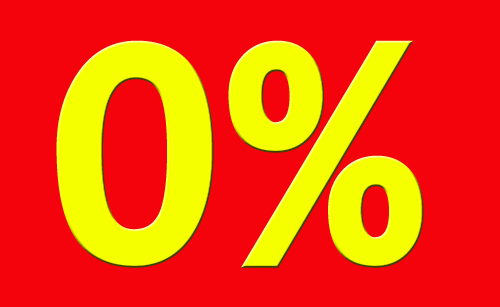
The RBA cut rates again yesterday. Where will it all end?
Stardate 05052015: Captain Stevens from the USSS Reserve decides to boldly go where no Australian central bank has gone before, taking official interest rates to a record low of 2%.
It’s monetary policy, Jim, but not as we know.
Ok, enough horsing around. Interest rates are at record lows. The question is where are we going from here.
My bet is we go further into uncharted territory.
… possibly even to zero.
Is that a big call? Maybe not.
Because we’re stuck in an international wedge – between a rock and a hard place. Between the US and Europe.
Because even though interest rates are at the lowest level in a couple of generations, they’re relatively high by international standards.
And with interest rates at 2%, that pretty much puts us a full 2 percenatage points higher than the US, Europe and Japan.
So what happens when our interest rates are higher than the rest of the world? Money starts rushing towards Australia. Effectively, investments in Australia are paying more than they are anywhere else.
But to buy Australian investments you need Australian dollars. So demand for Aussie dollars goes up. And if we take it back to Economics 101, we know that if demand goes up, the price goes up. The price in this case is the value of the Aussie dollar.
So the wider the interest-rate differential, the more pressure there is on the Aussie dollar.
But a higher Aussie dollar hurts us. For our industries trying to sell stuff overseas, our goods just got more expensive – and less competitive.
And Stevens and everyone on the flight deck have made no bones about how they’d like to see the Aussie dollar go lower. A lot lower.
And as they said yesterday:
Further depreciation seems both likely and necessary…
But that’s only going to happen if the interest rate differential is kept in check.
So while 2% might be low – crazy low – is actually as high as is possible, given what’s going on with the rest of the world.
And normally you get rate cuts when things are rocky, but if you read the minutes of the board meeting, the RBA reckon the home front is not too shabby.
In Australia, the available information suggests improved trends in household demand over the past six months and stronger growth in employment.
Though the transition of the mining boom is still a dark cloud:
Looking ahead, the key drag on private demand is likely to be weakness in business capital expenditure in both the mining and non-mining sectors over the coming year.
And Canberra is rowing in the wrong direction, with tough budgets on the horizon:
Public spending is also scheduled to be subdued.
And the RBA also seems broadly happy with how the property market is tracking, noting that outcomes across the country are patchy.
Growth in lending to the housing market has been steady over recent months. Dwelling prices continue to rise strongly in Sydney, though trends have been more varied in a number of other cities.
They also point out that threats to the inflation outlook are nowhere to be seen.
The gist of that is, if you’re looking for hints that the RBA might be planning a hike at any point in the foreseeable future, forget it.
So that’s the situation. Interest rates are wedged by the global situation, while the domestic economy is tracking comfortably – though potentially with some room for improvement.
So could rates go even lower?
You bet they could. And actually I would have to say that is the most likely scenario.
I mean imagine there was some sort of global shock. We’d want to lean on interest rates to try and protect the domestic economy. That’s what we’ve always done in the past.
During the GFC, interest rates dropped from over 7% to 3% in a very short time. (Remember when we used to think 3% was an ‘emergency’ level of interest rates? So 2008.)
But we don’t have 4 percentage points to play with anymore. We’ve only got two.
And it’s not hard to see where some sort of shock – even one just half as bad as the GFC – might come from.
Some kind of odd-ball result in China? A Greek default in Europe? Another taper-tantrum in the US?
Who knows? That’s the thing about shocks, you never know where they’re going to come from. They’re a shock.
But the point is, it’s not hard to imagine a situation where the Australian economy is under pressure, and rates are driven as low as they can go – to zero.
And what happens after that? You can’t go into negative territory. You can’t pay people to take money off you.
No, what happens next, and what we’ve seen in Japan, the US and now Europe, is money printing. Or as they like to call it ‘quantitative easing’.
If you’ve driven the price of money down to zero, then you’ve just got to come up with another way to increase the quantity.
And in a very short time, money printing has gone from the greatest policy sin, to standard practice.
And what does money printing create? Inflation. More money chasing the same amount of stuff, means prices go up.
We haven’t seen it in consumer prices, because of the massive capacity wars in Asia driving prices in the other direction.
But we have seen it in asset prices. All that money has to go somewhere. A lot of it ended up in the stock market.
And a lot of it ended up in property.
And that’s a scenario that could easily happen here. The RBA leaving the money taps on full, and driving property prices to the moon.
It might sound far fetched now. But ask me again in two years.